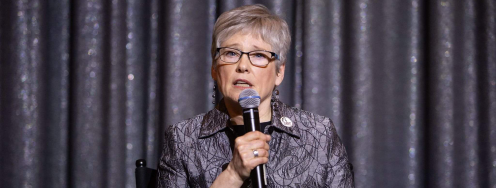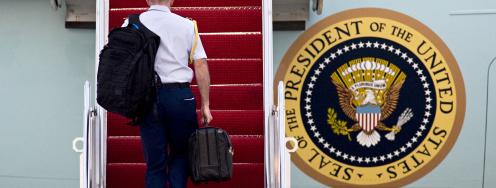One Minute Closer to Doomsday
Today the Bulletin of the Atomic Scientists, a venerable organization begun by Manhattan Project leaders who presciently realized the implications of their work, moved the Doomsday Clock one minute closer to midnight. It now stands at 5 minutes to “doomsday.”
The change is a visible indicator that the world as more at risk of a global catastrophe from nuclear weapons and other dangers such as climate change and pandemics. The clock has stood at 6 minutes to midnight since January 2010.
When it comes to nuclear weapons and proliferation threats, “Overall, there’s just really no new thinking,” said Kennette Benedict, executive director of the Bulletin. Despite implementation of the New START treaty with Russia and agreements from most of the world’s nations to secure nuclear materials the Bulletin’s leadership concluded that other opportunities have been stalled. The fact that nearly 20,000 nuclear warheads still exist and that further efforts to roll back these arsenals, such as entry into force of the Comprehensive Test Ban Treaty, have not been realized led to the decision to push the minute hand back.
Media coverage of the event has been substantial, with stories in USA Today, CBS News, and The Washington Post.
The clock began humbly as a symbol of nuclear catastrophe, defined mostly by the U.S.-Soviet competition. The closer the minute hand was to midnight, the more precarious the world’s nuclear face-off. Over the decades the clock has grown in its reach and recognition, and today stands as a universal symbol of the world’s proximity to global disaster. In addition to the core threat from nuclear weapons, it now incorporates factors such as biological threats, climate disruption, and regional conflicts.
Today's change reflects important missed opportunities and the reality that the world still possesses some 20,000 nuclear bombs. Though we live in a time when other risks threaten humanity, there are still none that compare to the rapidity and total destruction of nuclear weapons. There has been much progress in the past several years with respect to reducing nuclear risks. The world has far fewer weapons than was the case just ten years ago. But the nature of nuclear weapons demands that we eliminate them completely. The threat posed by even one is too great to “live with.”
We applaud the diligence of the Bulletin and its dedicated board and staff. And we consider ourselves fortunate to be working at similar ends. With hard work and continued commitment, next year we can look forward to pushing the minute farther away from doomsday.




